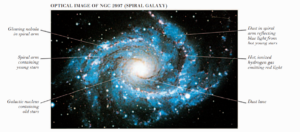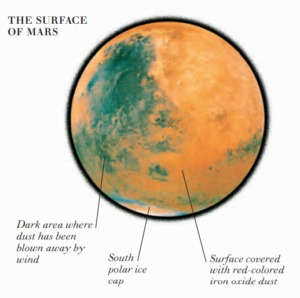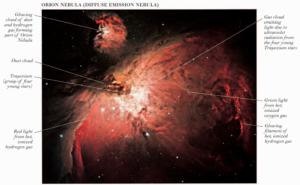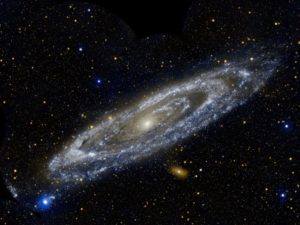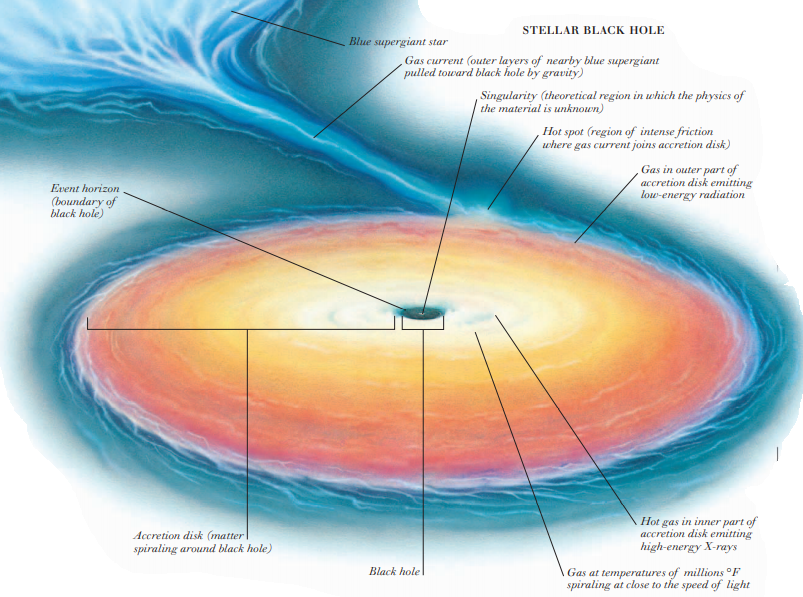
NEUTRON STARS AND BLACK HOLES form from the stellar cores that remain after stars have exploded as supernovae. If the remaining core is between about one and a half and three solar masses, it contracts to form a neutron star. If the remaining core is greater than about three solar masses, it contracts to form a black hole. Neutron stars are typically only about 6 miles (10 km) in diameter and consist almost entirely of subatomic particles called neutrons. Such stars are so dense that a teaspoonful would weigh about a billion tons.

Neutron stars are observed as pulsars, so-called because they rotate rapidly and emit two beams of radio waves, which sweep across the sky and are detected as short pulses. Black holes are characterized by their extremely strong gravity, which is so powerful that not even light can escape; as a result, black holes are invisible. However, they can be detected if they have a close companion star. The gravity of the black hole pulls gas from the other star, forming an accretion disk that spirals around the black hole at high speed, heating up and emitting radiation. Eventually, the matter spirals in to cross the event horizon (the boundary of the black hole), thereby disappearing from the visible universe.


